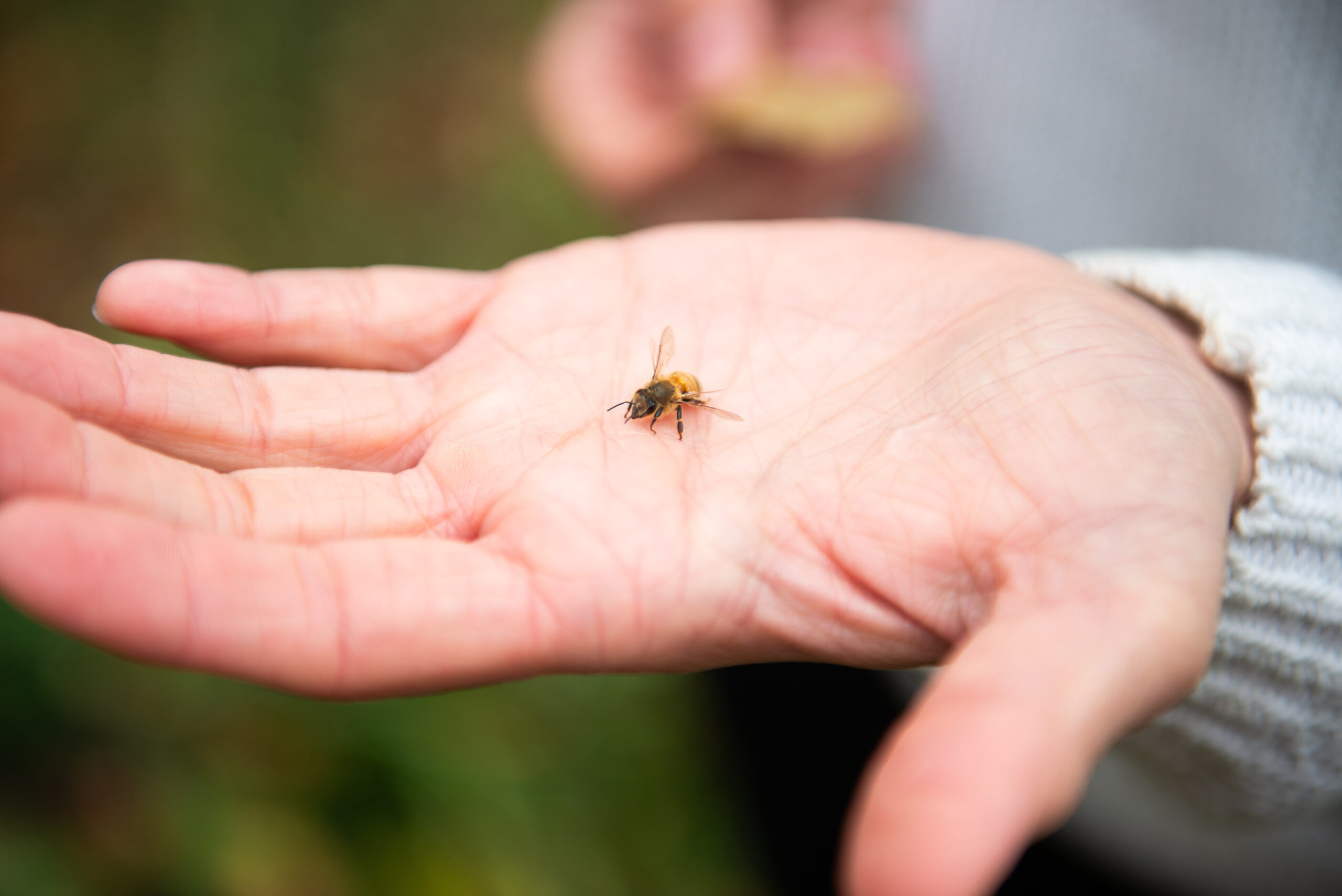Inside D’s Bees: The beekeeping operation on White Rock Creek
Inside D’s Bees: The beekeeping operation on White Rock Creek
Jodi Dubuclet of D’s Bees harvests and bottles ‘LH’ honey from her five backyard hives

Photography by Lauren Allen
A storm in 2019 brought more than just gale force winds and heavy rain to Jodi Dubuclet’s Forest Meadow home.
It brought buzzing bees — eventually, anyway.
After the storm, her once tree-filled property backing up to White Rock Creek was left significantly less forested. On the positive side, in the absence of once abundant maple and cedar elms, sunlight finally shone over her backyard. Sustainability is a guiding principle for Dubuclet. She has a chicken coop on her property for fresh eggs, and after the storm finally brought the sun to her sloping, still decently wooded yard, it was time to plant her own garden.
When her cucumbers didn’t grow, she realized she had a pollinator problem. Fortunately enough, her husband had a solution.
“So I was complaining about it, and my husband bought me a hive for Christmas,” she says. “So it’s like, 2019, I get that hive. And I’m like, ‘OK, well, this is one way to get pollinators. So I ordered my bees. You order bees the season before you need them. So I ordered bees for Christmas, picked them up that spring, started my first hive and kind of learned from there.”
As unlikely as it may seem, she started a full-blown beekeeping operation on White Rock Creek in a residential neighborhood. But backyard beekeeping has become increasingly popular in recent years, with cities like Salt Lake City loosening code restrictions and others like Chicago issuing beekeeping permits for backyard apiarists.
What started out as one hive quickly became two. Now, over four years later, the neuroscience research engineer by day manages five hives with close to two million bees, although their numbers dwindle over the winter.
“I was surprised, because everything about learning to be a new beekeeper is that you’re gonna fail. It’s like preparing you for the failures, looking for things that are going wrong, preparing for when things go wrong,” Dubluclet says. “Nobody really teaches you what you do when they do really, really well. And I was completely unprepared for it. But what happens when they do really well is they make more bees. Yeah, and that has been my experience since then, is I have a bee Mecca.”

Photography by Lauren Allen
Invariably sweating from within the safety of her heavy beekeeper suit, she monitors her bees to ensure colony health, introduces parasite-resistant queens to combat threats like varroa mites and bundles hives up for cold winter months. During the summer months, the creek provides an ample water source for the hives. Workers bring the water to the hive, where a group of bees collect near the entrance and use their wings to bring cool air in and push hot air out, acting as a natural HVAC unit.
The fun comes in the fall and spring, when Dubuclet harvests honey from the hives. Each season’s honey crop looks and tastes different due to varying environmental conditions and nutritional sources. Robustly flavored fall honey runs darker, whereas spring honey appears lighter and has a sweeter, floral flavor.
“Spring was amazing this year, it’s actually the first spring I’ve ever had two five-gallon jugs of spring honey,” she says. “I’m used to the inverse. I’m used to really great falls and pretty poor springs, and it’s not because we don’t have a ton of flowers, it’s because of our rain. We get those big gushing rains in the spring. It washes out the nectar.”
As her honey operation has grown, she’s begun producing more honey than she and her family need. That’s how D’s Bees was born. At her husband’s urging, she started her own business, selling honey and other products from her hives at pop-ups. Her products include lotions, beeswax salves, whole honeycomb and bottled “LH” honey.
“The first big, like vendor thing I ever did, it was incredibly rewarding, because people were grateful to find a local honey source,” she says. “Like they’ve gotten a local source before, but they couldn’t find it anymore, or their local source is local to Dallas-Fort Worth, local to the city you’re standing in, right? Usually, somebody has come from some other place and I’m like, ‘No, I’m right here. I’m not just local, I’m down the street.’”
She and her husband also occasionally make mead and honey-infused vodka, rum and whiskey for home use and gifts.
Even though her bottles of D’s Bees LH honey sell well at events, the business isn’t the most important aspect. For her, the priority is sustainability and creating a natural product for herself, her husband and three kids to enjoy.
“I absolutely am a big fan of honey for its medicinal properties. I think of holistic self care and wellness as a pretty important factor in my life,” she says. “I am all about sustainability to some degree, that’s my engineering nerd kind of working here, right? How can I produce exactly what I want, which is the highest quality? If I wasn’t producing the highest quality, I could just buy it.”
대화 참여하기